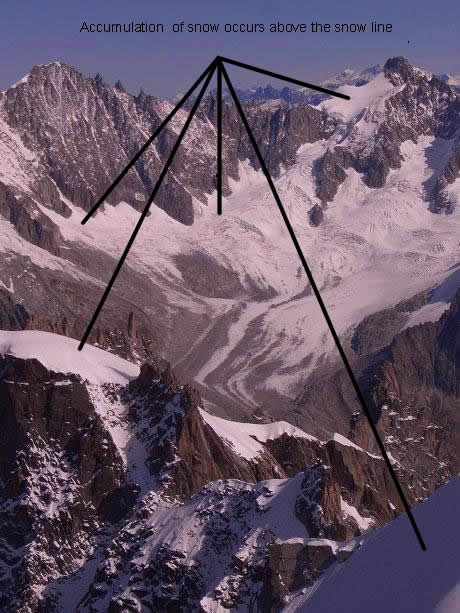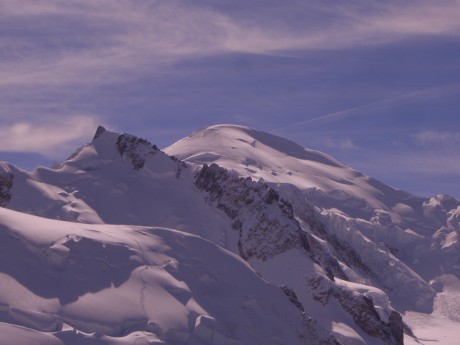The accumulation area of a glacier is the part always covered by snow, where snow and ice are added to the glacier system.
The addition of snow and ice is called 'Accumulation' and can occur through direct snow fall, the accumulation of wind blown snow, and through firnification.
Accumulation areas are, of course, above the snow line because snow and ice must survive all year round. Areas where snow and ice are lost from the glacial system are called Ablation Zones.
 |
With global warming becoming a serious threat to European glaciers, the lower end of the accumulation zone for many glaciers has moved further up the mountains. This is because as average temperatures rise, the snow line (point on the mountain above which snow survives all year round) moves further up the mountain. Most European glaciers are retreating, meaning that every year the ablation (loss of snow and ice) is greater than the accumulation (addition of snow and ice) |
 d d |
High altitude snow fields supply fresh snow to glaciers throughout the year. In this photograph the snow lying across the top of Mont Blanc (French Alps) is feeding directly to a glacier in the bottom right corner of the photograph. Avalanches from this site fall directly into the corrie from which the glacier emerges. Even in mid summer snow can fall at these altitudes (about 3800 to 4000m) and add to the mass of the glaciers. |
![]()
